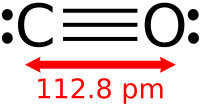
Photo from wikipedia
Near-infrared spectroscopy (NIRS; continuous wave type) is a noninvasive tool for detecting the relative change of oxyhemoglobin and deoxyhemoglobin. To make this change, intervention methods must be applied. This study… Click to show full abstract
Near-infrared spectroscopy (NIRS; continuous wave type) is a noninvasive tool for detecting the relative change of oxyhemoglobin and deoxyhemoglobin. To make this change, intervention methods must be applied. This study determined the hemodynamics of 44 healthy participants and 35 patients with sepsis during exposure to FIR as a novel physical intervention approach. Local microcirculation of their brachioradialis was monitored during exposure and recovery through NIRS. The variations in blood flow and microvascular reaction were determined by conducting paired and unpaired t tests. The oxyhemoglobin levels of the healthy participants increased continuously, even during recovery. In contrast to expextations, the oxyhemoglobin levels of the patients plateaued after only 5 min of FIR illumination. The proposed method has potential applications for ensuring efficient treatment and facilitating doctors in diagnosing the functions of vessels in intensive care units. Mapping diagrams of HbO2 in healthy males and males with sepsis illustrated unique scenarios during the process.
Journal Title: Journal of biophotonics
Year Published: 2017
Link to full text (if available)
Share on Social Media: Sign Up to like & get
recommendations!